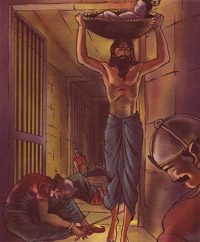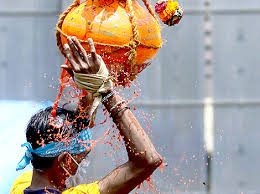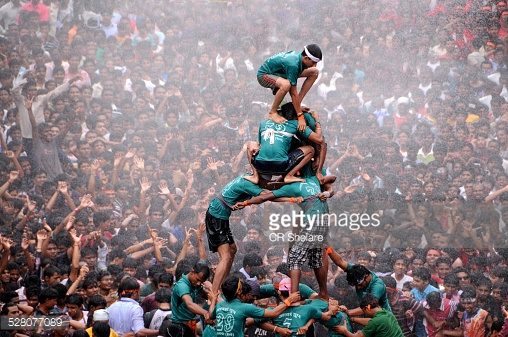Goa will celebrate the much revered Lord Krishna’s birth today. Temples across the state would have already welcomed Lord Krishna at the stroke of midnight. Janmashtami popularly known as Gokulashtami in Goa is celebrated on the eight day after the full moon of Shravan (fifth lunar month of the Hindu calender).
One day before Gokulashtami
On the Previous evening of Gokulashtami or Janmashtami, devotees gather in neighbourhood temples. Here they praise Lord Krishna by singing ‘Aartis’ and ‘Bhajans’. A small cradle is decorated and the idol of the Lord is placed in it. This signifies Krishna’s birth. The ceremony continues till morning. People who have fasted the previous day break their fast, either at midnight or in the morning.
“Here, at Radhakrishna temple, devotees gather the previous evening to sing praises of Krishna only to break at the stroke of midnight. Then, an idol of Lord Krishna is bathed with water, milk, honey, curd etc. before being placed in a small but tastily decorated cradle at the center of the congregation. This marks the beginning of celebration of Gokulashtami,” said the head priest Shridhar Bhat of Radhakrishna Temple in Panaji in a NT report.
Mythology
Kansa was foretold that his sister’s child would one day slay him. As a precautionary measure Kansa imprisoned his sister Devaki and her husband Vasudeva. Six children born to them were killed by Kansa. The seventh was disguised as a miscarriage but the child survived. The child was Balrama. Lord Krishna was the eight child born to his parents.

Soon after the birth of Lord Krishna it is said the cell doors opened and Vasudev took the new born baby to Gokul. On his way to Gokul, Vasudeva crossed the Yamuna river. The scene is famously depicted in many paintings. This is how Lord Krishna came to be raised in Nanda and Yashoda’s care.
‘This is the only major Hindu festival that is celebrated in the dark half of the moon phase. This practice indicates and preaches to the world, currently enveloped in the gloom of violence and hatred, to hold on to faith and hope for a better world, free of negativity just as Lord Krishna who was born against all odds’ – NT report.
Birth of Dahi Handi!
The tradition is born out of Lord Krishna’s childhood pranks. As a child the Lord enjoyed eating butter a lot. He would often steal butter (hence the name Makhanchor) from the pots of Gopis (women of Gokul). The pots were usually hung above the ground and out of reach of a child’s hand. Lord Krishna adamant in his resolve would often make a human pyramid using the help of his friends to break the pot and eat the butter.

This led to many devotees recreating the scene and so the tradition of breaking the Dahi handi was born. A pot is tied at the center of a rope and hung above the ground. Participants have to make a human pyramid and try to break the pot. The pot contains curd and a coconut is kept on the opening. This coconut is used to break the pot. This tradition is not limited to men but women take part in it too. Hindus across the world, even in far off Fiji where they were taken as indenture labour, celebrate Gokulashtami.
Gokulashtami in Goa
In Goa, the tradition is followed across the state. Some schools even actively organise Gokulastami celebrations. Handi (pot) containing dahi (curd) are hung from a safe height. Children make a human pyramid and break it. The rope on which the pot is tied has many different types of fruits tied on it.


